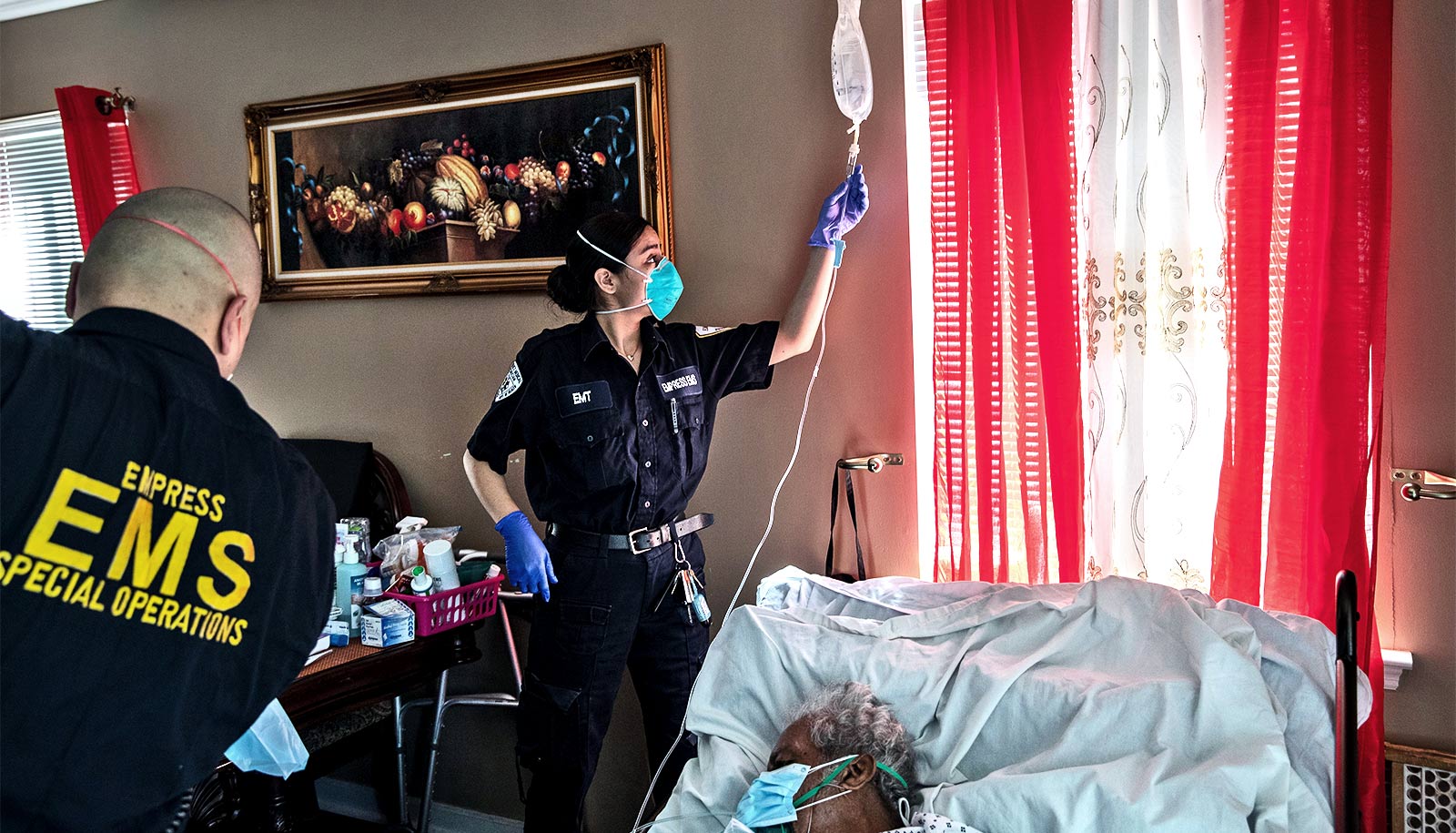COVID-19 is much more deadly than the flu, a new study confirms.
The study’s results also project a grim future if the US doesn’t put up a strong fight against the spread of the virus.
The national rate of death among people infected with the novel coronavirus that causes COVID-19 who show symptoms is 1.3%, the researchers found. The comparable rate of death for the seasonal flu is 0.1%.
“COVID-19 infection is deadlier than flu—we can put that debate to rest,” says Anirban Basu, professor of health economics and director of the CHOICE Institute at the at the University of Washington School of Pharmacy.
A new website from Basu and his colleagues explores the infection and fatality rates in US counties for people with symptoms.
For this study, 116 counties in 33 states had COVID-19 data that fit Basu’s robust criteria for inclusion in the analysis. The site’s projections will be updated as new data becomes available, he says.
Basu stresses that this website is not a forecasting tool—it does not predict what will happen in the future. Rather, it uses the estimated death rate among symptomatic COVID-19 cases to project what is happening currently in these communities, such as the likely numbers for total infections and symptomatic cases. The tool will also detail how the daily incidence of infections changes.
In the state of Washington, for example, the county-specific fatality estimates ranged from 0.5% to 3.6%. King County at 3.6% is the highest among all 116 US counties the researchers studied. Among the state’s other counties that the researchers could include in this analysis were Chelan County at 2.3%, Island County at 2.2%, and Spokane County at 2%.
The COVID-19 death rate, the study adds, means that if the same number of people in the US are infected at the end of the year as those infected with the influenza virus—roughly 35.5 million in 2018-2019—then nearly 500,000 people will die of COVID-19.
However, the novel coronavirus is more infectious than the influenza virus, Basu says. So, a conservative estimate of 20% of the US population becoming infected by the end of the year—with the current trends in social distancing and health care supply continuing, while accounting for those infected who will recover asymptomatically—could result in the number of deaths climbing to between 350,000 and 1.2 million.
“This is a staggering number, which can only be brought down with sound public health measures,” Basu says.
To build county-by-county models that could more accurately show how deadly the pandemic is, Basu used publicly reported data on the total COVID-19 cases and deaths. Realizing that both of these reported quantities likely undercount and change over time, Basu looked at the trends in the ratio of these two numbers, or the reported “case fatality rates,” to more accurately reflect how deadly the virus is among those who fall sick because of it.
“Our hope is that our study results can help inform local and national policies that will save lives in the future,” says Basu. “Ultimately, we want this work to advance the health of people around the world.”
Basu also notes that the model should not be viewed as the “last word” on estimating the COVID-19 fatality rate, but as one of several methods used to measure the impact of the virus.
“The infection fatality ratio estimate is itself dynamic in nature,” Basu says. “The overall estimate can both increase or decrease in the future, depending on the demographics where the infections will be spreading.
“It is possible, as the infection spreads to more rural counties of the country, the overall infection fatality rate will increase due to the lack of access to necessary health care delivery.”
The study appears in Health Affairs. The University of Washington CHOICE Institute and the School of Pharmacy funded the work.
Source: University of Washington



